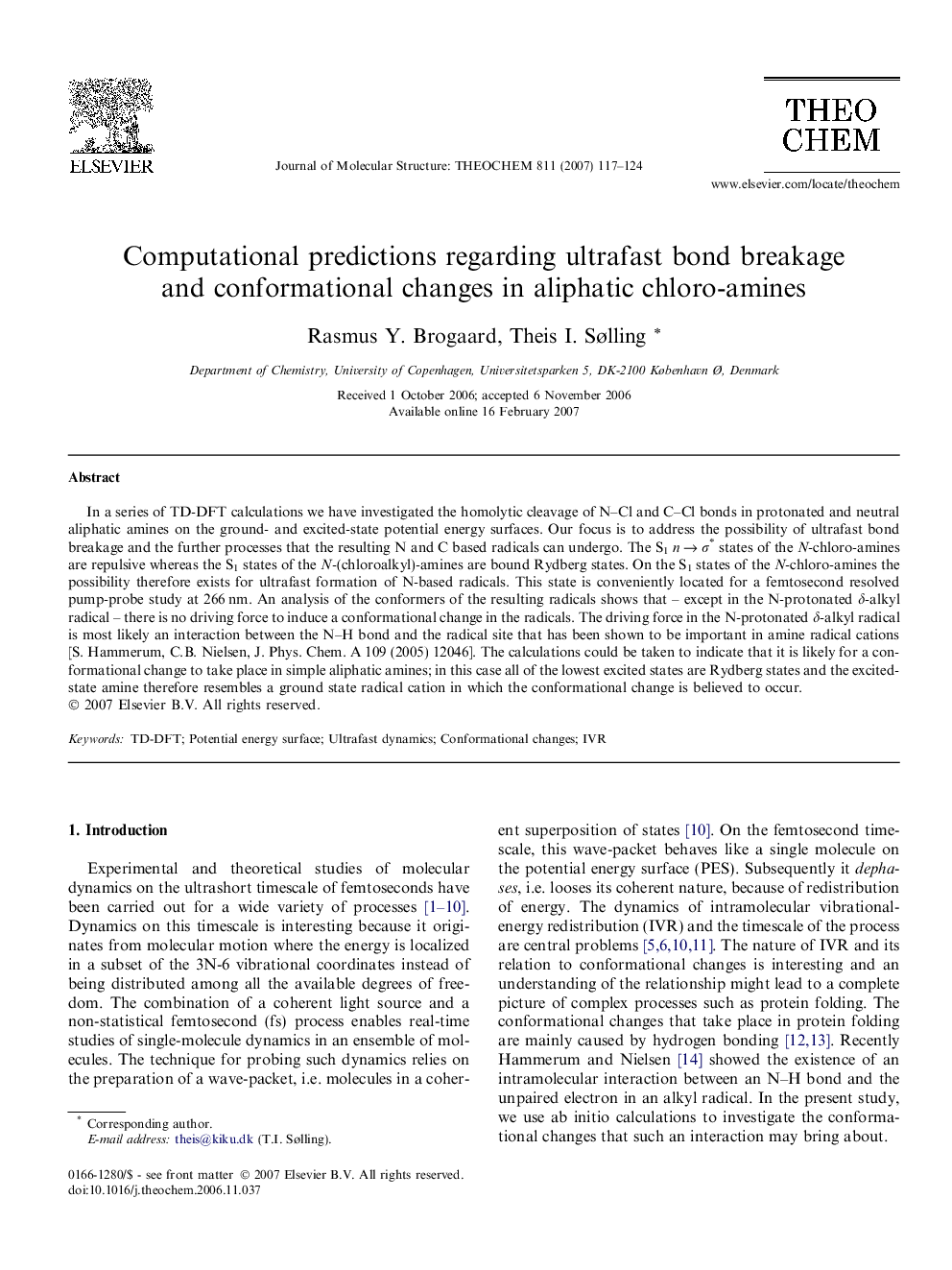| Article ID | Journal | Published Year | Pages | File Type |
|---|---|---|---|---|
| 5418713 | Journal of Molecular Structure: THEOCHEM | 2007 | 8 Pages |
Abstract
In a series of TD-DFT calculations we have investigated the homolytic cleavage of N-Cl and C-Cl bonds in protonated and neutral aliphatic amines on the ground- and excited-state potential energy surfaces. Our focus is to address the possibility of ultrafast bond breakage and the further processes that the resulting N and C based radicals can undergo. The S1n â Ï* states of the N-chloro-amines are repulsive whereas the S1 states of the N-(chloroalkyl)-amines are bound Rydberg states. On the S1 states of the N-chloro-amines the possibility therefore exists for ultrafast formation of N-based radicals. This state is conveniently located for a femtosecond resolved pump-probe study at 266 nm. An analysis of the conformers of the resulting radicals shows that - except in the N-protonated δ-alkyl radical - there is no driving force to induce a conformational change in the radicals. The driving force in the N-protonated δ-alkyl radical is most likely an interaction between the N-H bond and the radical site that has been shown to be important in amine radical cations [S. Hammerum, C.B. Nielsen, J. Phys. Chem. A 109 (2005) 12046]. The calculations could be taken to indicate that it is likely for a conformational change to take place in simple aliphatic amines; in this case all of the lowest excited states are Rydberg states and the excited-state amine therefore resembles a ground state radical cation in which the conformational change is believed to occur.
Related Topics
Physical Sciences and Engineering
Chemistry
Physical and Theoretical Chemistry
Authors
Rasmus Y. Brogaard, Theis I. Sølling,
